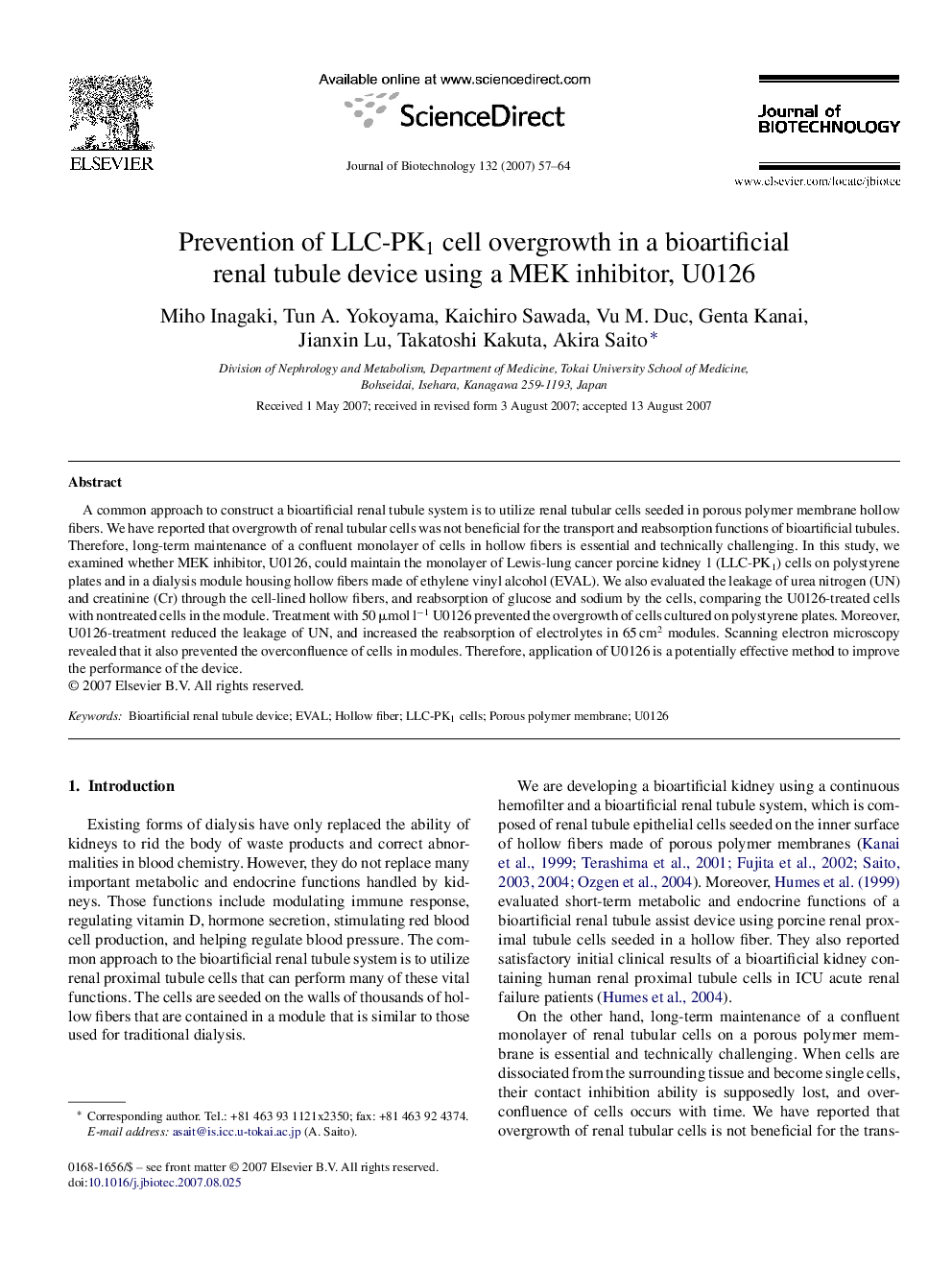| Article ID | Journal | Published Year | Pages | File Type |
|---|---|---|---|---|
| 25145 | Journal of Biotechnology | 2007 | 8 Pages |
A common approach to construct a bioartificial renal tubule system is to utilize renal tubular cells seeded in porous polymer membrane hollow fibers. We have reported that overgrowth of renal tubular cells was not beneficial for the transport and reabsorption functions of bioartificial tubules. Therefore, long-term maintenance of a confluent monolayer of cells in hollow fibers is essential and technically challenging. In this study, we examined whether MEK inhibitor, U0126, could maintain the monolayer of Lewis-lung cancer porcine kidney 1 (LLC-PK1) cells on polystyrene plates and in a dialysis module housing hollow fibers made of ethylene vinyl alcohol (EVAL). We also evaluated the leakage of urea nitrogen (UN) and creatinine (Cr) through the cell-lined hollow fibers, and reabsorption of glucose and sodium by the cells, comparing the U0126-treated cells with nontreated cells in the module. Treatment with 50 μmol l−1 U0126 prevented the overgrowth of cells cultured on polystyrene plates. Moreover, U0126-treatment reduced the leakage of UN, and increased the reabsorption of electrolytes in 65 cm2 modules. Scanning electron microscopy revealed that it also prevented the overconfluence of cells in modules. Therefore, application of U0126 is a potentially effective method to improve the performance of the device.
